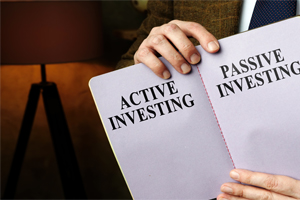Active vs passive investing is like the Yin and Yang of investing. Active investing follows a dynamic approach that seeks to beat the market through careful selection and timing of investments. On the other hand, passive investing follows a steady and reliable method that aims to mimic the market's returns over the long term. Choosing a side in this battle of two unique and distinct strategies can be challenging. Let's explore the differences between active and passive investing to help you make a choice.
What is active investing?
Active investing focuses on trying to outperform the market. In active mutual funds, the fund manager buys and sells securities based on research, market analysis, and other factors. The primary aim of this strategy is to earn higher returns than the market average by selecting individual stocks, bonds, or other assets that are expected to perform well. Some examples of active investing include active equity funds, hybrid funds, etc.
Like any other strategy, active investing has pros and cons, as discussed below.
Advantages of active investing
- Potential for higher returns:Since active investing aims to outperform the market, you may potentially earn good returns.
- Flexibility: Active investing offers greater flexibility in choosing investments. Mutual fund managers can customise portfolios to respond to market changes and capitalise on emerging investment opportunities.
- Potential for better risk protection:Active managers can use their expertise to minimise risk, take timely actions, and lower the potential for loss.
Disadvantages of active investing
- Higher costs: Active investing can involve high fees and transaction costs that can eat into your investment returns over time.
- Inconsistent: Active investors can find it hard to outperform the market consistently. Even with the best effort and optimal research, there is no guarantee that an active manager can outperform the market every time.
- Higher risk:Active investing involves more risk than passive investing, as active managers may make mistakes and errors in judgement, resulting in losses for investors. Active investing can also be subject to emotional bias.
Now that you know a bit about active investing, let's move on to passive investing.
What is passive investing?
Passive investing tracks a specific index or benchmark instead of attempting to beat the market. Passive fund managers only try to mimic a benchmark by investing in the same assets as the benchmark. Some common examples of passive investments include index funds, passive debt funds, passive equity funds, etc.
Advantages of passive investing
- Lower costs:Passive investing generally has lower fees and expenses than actively managed funds as it does not require frequent buying and selling.
- Diversification:Passive investing offers better diversification and market exposure as it invests in all the securities of the benchmark it follows.
- Easy: Passive investing is generally considered easier and less time-consuming, as it involves only holding on to the passive investment vehicle that tracks the benchmark. There is no need to time the market or make active decisions.
Disadvantages of passive investing
- No scope for outperforming the market:Passive investing aims to achieve market returns, so there is limited potential for beating the market.
- Lack of control:Passive investing involves investing in a pre-determined index or sector, and there is no control over the selection of stocks or companies.
Active vs passive investing – the verdict
Active investing can potentially lead to relatively better financial growth, but it requires more time, effort, and expertise and comes with higher costs and risks. There is also no guarantee that the fund will beat the benchmark. In passive investing, the fund will perform as per its benchmark and the scope for outperformance is minimal. But it is generally less expensive and time-consuming.
Conclusion
The debate between active and passive investment is ongoing, and there is no clear winner. The best approach may be to use a combination of active and passive strategies, depending on specific market conditions, investment goals, and risk appetites.
An investor education initiative by Edelweiss Mutual Fund
All Mutual Fund Investors have to go through a one-time KYC process. Investors should deal only with Registered Mutual Fund (RMF). For more info on KYC, RMF and procedure to lodge/redress any complaints, visit - https://www.edelweissmf.com/kyc-norms
MUTUAL FUND INVESTMENTS ARE SUBJECT TO MARKET RISKS. READ ALL SCHEME RELATED DOCUMENTS CAREFULLY
Trending Articles
MUTUAL FUND INVESTMENTS ARE SUBJECT TO MARKET RISKS, READ ALL SCHEME RELATED DOCUMENTS CAREFULLY.




















